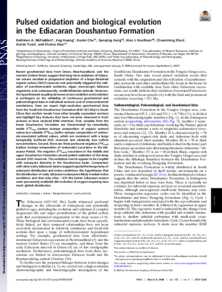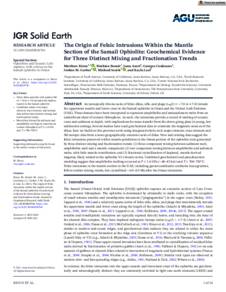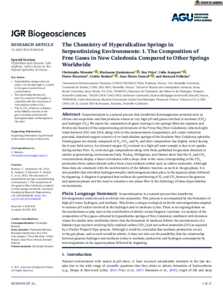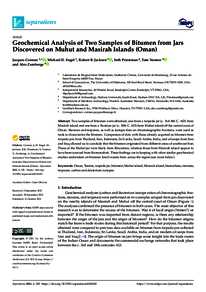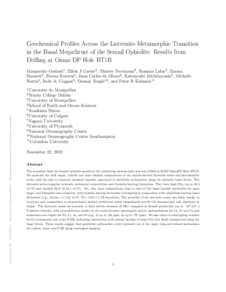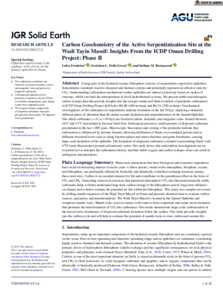Document
Pulsed oxidation and biological evolution in the ediacaran doushantuo formation.
Identifier
DOI: 10.1073/pnas.0708336105
Source
Proceedings of the National Academy of Sciences of the United States of America. v. 105, 9, p. 3197-3202
Contributors
Huang, Jing., Author
Chu, Xuelei., Author
Jiang, Ganqing., Author
Mighell, Alan J., Author
Zhou, Chuanming., Author
Yuan, Xunlai., Author
Xiao, Shuhai., Author
Country
United States.
City
Washington
Publisher
The National Academy of Sciences of the USA.
Gregorian
2008-03-01
Language
English
English abstract
Recent geochemical data from Oman, Newfoundland, and the western United States suggest that long-term oxidation of Ediacaran oceans resulted in progressive depletion of a large dissolved organic carbon (DOC) reservoir and potentially triggered the radiation of acanthomorphic acritarchs, algae, macroscopic Ediacara organisms, and, subsequently, motile bilaterian animals. However, the hypothesized coupling between ocean oxidation and evolution is contingent on the reliability of continuous geochemical and paleontological data in individual sections and of intercontinental correlations. Here we report high-resolution geochemical data from the fossil-rich Doushantuo Formation (635-551 Ma) in South China that confirm trends from other broadly equivalent sections and highlight key features that have not been observed in most sections or have received little attention. First, samples from the lower Doushantuo Formation are characterized by remarkably stable δ13C org (carbon isotope composition of organic carbon) values but variable δ34SCAS (sulfur isotope composition of carbonate-associated sulfate) values, which are consistent with a large isotopically buffered DOC reservoir and relatively low sulfate concentrations. Second, there are three profound negative δ13Ccarb (carbon isotope composition of carbonate) excursions in the Ediacaran Period. The negative δ13Ccarb excursions in the middle and upper Doushantuo Formation record pulsed oxidation of the deep oceanic DOC reservoir. The oxidation events appear to be coupled with eukaryote diversity in the Doushantuo basin. Comparison with other early Ediacaran basins suggests spatial heterogeneity of eukaryote distribution and redox conditions. We hypothesize that the distribution of early Ediacaran eukaryotes likely tracked redox conditions and that only after ≈551 Ma (when Ediacaran oceans were pervasively oxidized) did evolution of oxygen-requiring taxa reach global distribution.
Description
Proceedings of the National Academy of Sciences of the United States of America
Volume 105, Issue 9, 4 March 2008, Pages 3197-3202
Volume 105, Issue 9, 4 March 2008, Pages 3197-3202
ISSN
0027-8424
Category
Journal articles

